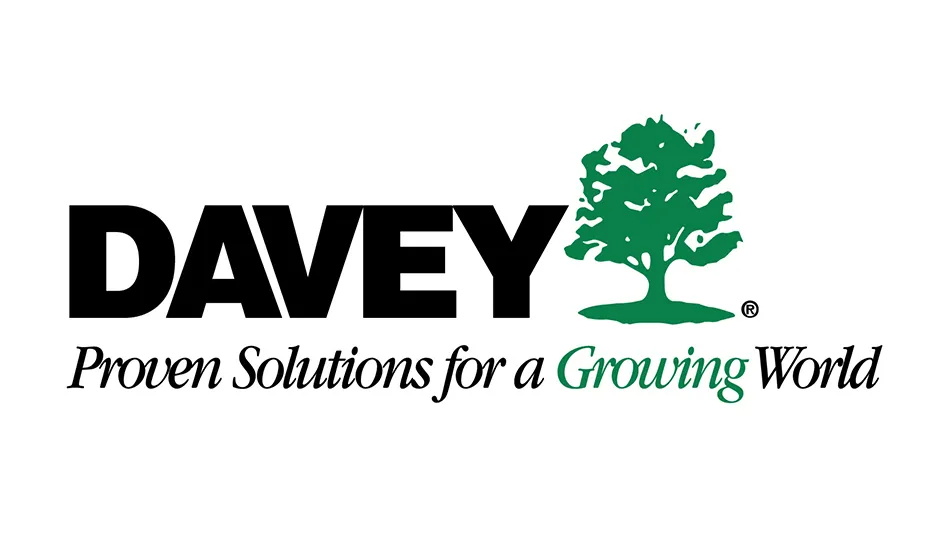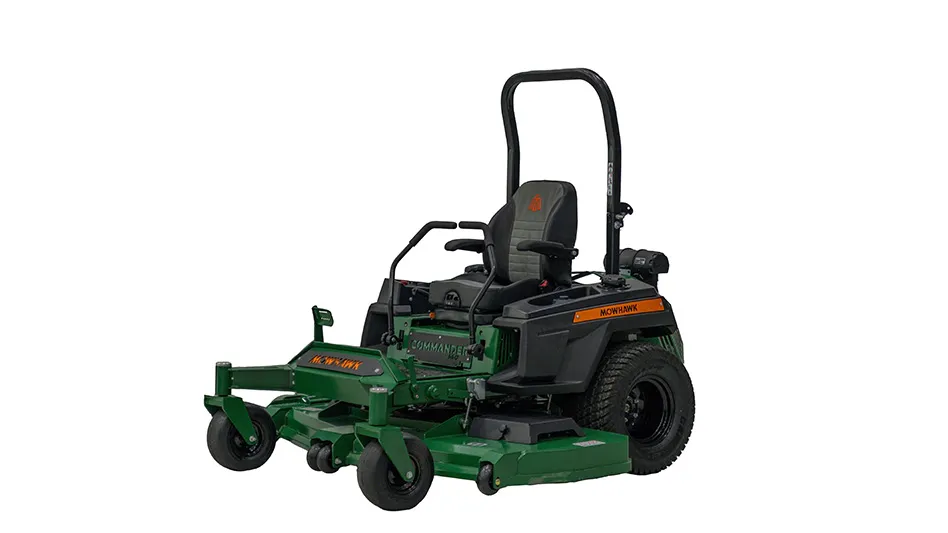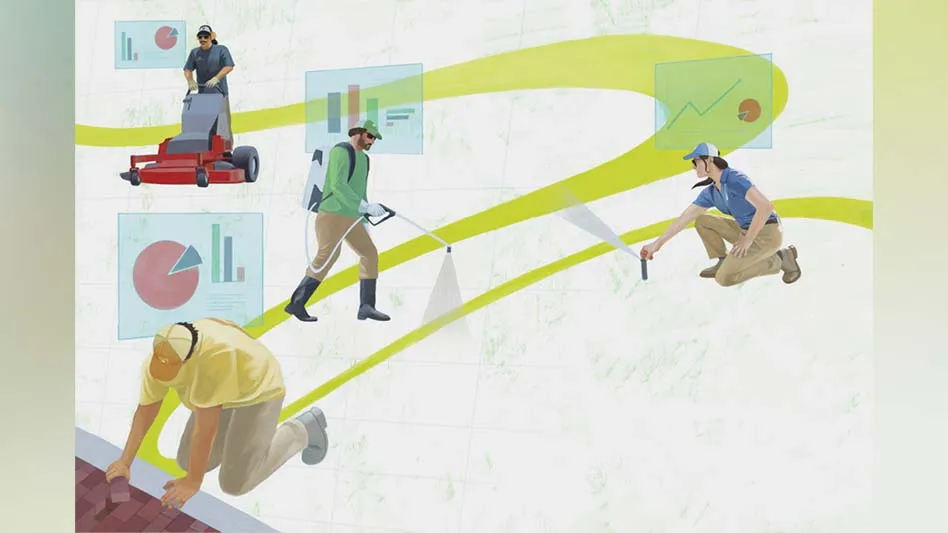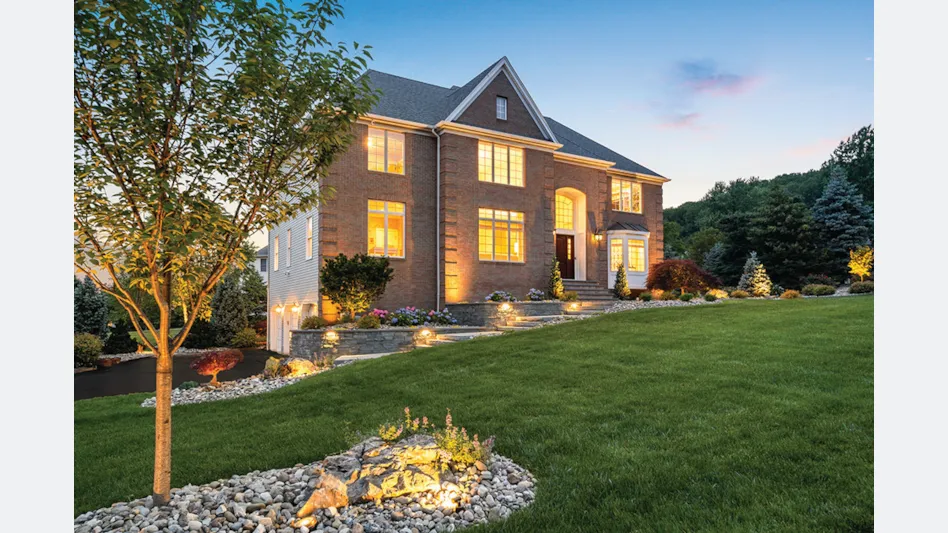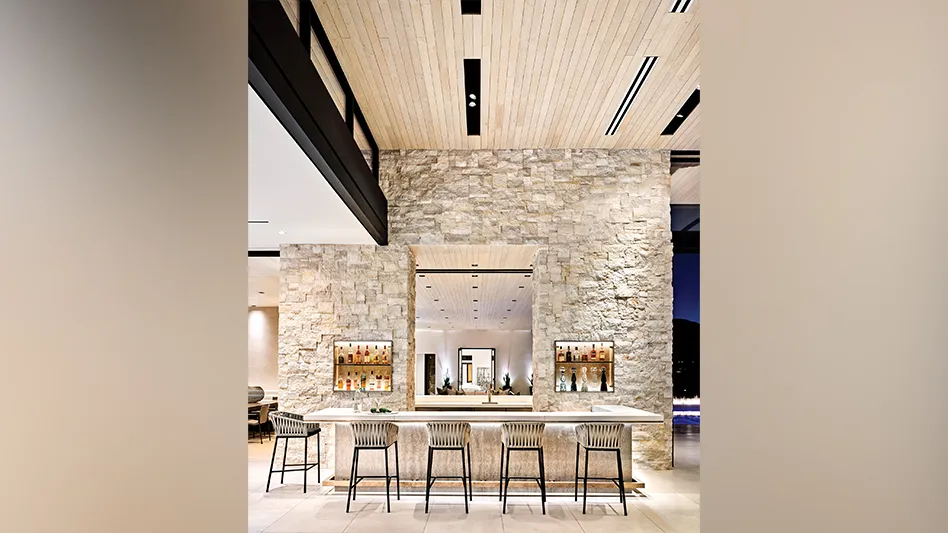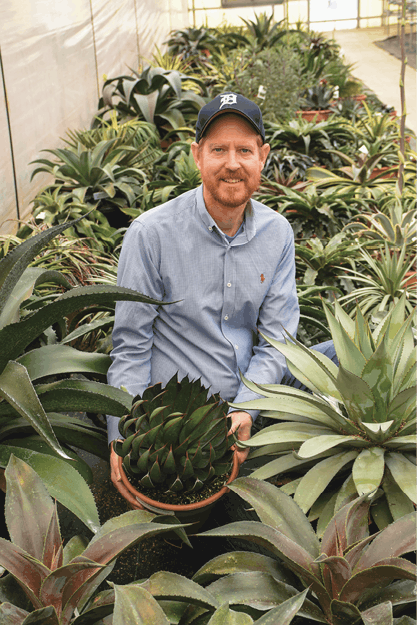
With their striking textures and interesting color combinations, Hans Hansen became smitten with Mangave some 15 years ago. The remarkable plant with the funny name (pronounced man-GAH-vay) would lead him to hybridize some of the coolest plants on the market.
Hans, the director of new plant development at Walters Gardens, leads a robust breeding program of Mangave, which is an intergeneric cross of Manfreda x Agave. Initially, his goal was to find hardier agave-like plants, he says. But as the program developed, the goal expanded to selecting colorful and attractive patio plants.
Because of their hybrid parentage, Mangave provide an array of colors and forms. The Manfreda line supplies the foliage spotting, as well as the cascading and wavy foliage. The Agave parentage delivers durability and architectural form.
Thankfully for transplanters, and anyone else working with Mangave, the plants are primarily void of the big, poky spines.
“I really enjoy the diversity of the plants, and the colors and form of the foliage. The plants are very adaptable and combine very well in container combinations, both with moisture-loving annuals, as well as plants with low water requirements,” Hans says.
Walters Gardens introduced its first Mangave cultivar, ‘Pineapple Express,’ then began adding more varieties year after year. The Mad About Mangave Collection has grown to more than 30 plants.
The first Mangave was discovered in a tray of Manfreda seedlings and created by an unintentional cross pollination, he explains. Although Mangave is not from Hans’ own crosses, the interesting hybrid piqued his interest, and he was able to devote more time to Mangave when he moved to Walters Gardens in 2009.
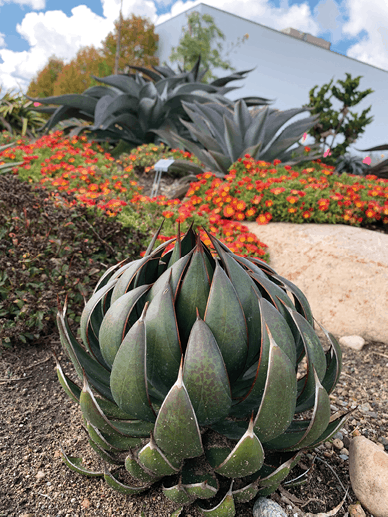
During the last 15 years, he’s experienced some highs and lows, like any breeder.
“I’ve enjoyed discovering the diversity and ease of culture from the crosses, including some lovely purple, red and variegated forms that came from my breeding work. But it’s disappointing when some of the most attractive variegated selections are difficult to produce in tissue culture,” he says.
The trade and consumers alike have praised these groovy-looking plants. Consumers share their photos on Instagram and Facebook, complete with its own hashtag, #mangave. Hans attributes the popularity to the diversity of Mangaves. Consumers really dig the names, as well, with monikers like ‘Bad Hair Day,’ ‘Purple People Eater’ and ‘Mission to Mars.’
“The segment of the population that has embraced it the most are the millennials,” Hans says. “We try to come up with clever names that fit the plant. Mangaves are edgy, so their names can be a little outside of the box.”
Austin Quimby, general manager at Green Lake Nursery in Dallas, Texas, is building up numbers of Mangave in production after a few years of healthy sales.
“Because Mangave are a good fit in the landscape and as an indoor plant, we’ve found that our landscape and our retail customers really like them,” he says.
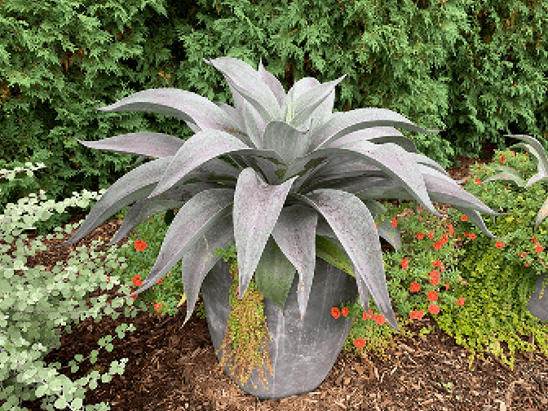
Green Lake sells a 1- and 3-gallon Mangave.
The crop was easy to onboard into production and it finishes quicker than a traditional agave, he says.
“They’re tough, safe and easy to use. I’d like to see them used in mass plantings in the landscape. If we can get one that’s cold hardy, that will be a big plus with our customers,” he adds.
Growers can produce a Mangave in a quart in about 10-15 weeks for most selections, while some of the finer leaf varieties take a little longer.
Good UV light is required for the best color and spotting, so if they’re being produced in a greenhouse or under poly, plants will color up once they’re outside in full intensity sunlight. Ideal growing temperatures range from 68-75°F. Maintain a higher pH — about 6.2 to 6.8 is ideal. Mangave are not heavy feeders and require about 100 ppm of nitrogen. Don’t allow them to dry out in production but avoid overly wet conditions to prevent root and crown rot.
“In liner production in our greenhouses, we treat the young plants the same way we grow our tissue culture hosta liners,” Hans says. “For the quickest finish times they need the moisture that other general perennials do. For growers, time in the greenhouse equals money.”
Walter Gardens, along with a select licensee network, provides wholesale liners throughout the United States and Canada. Walters Gardens also has licensed growers in Europe, Japan and Australia.
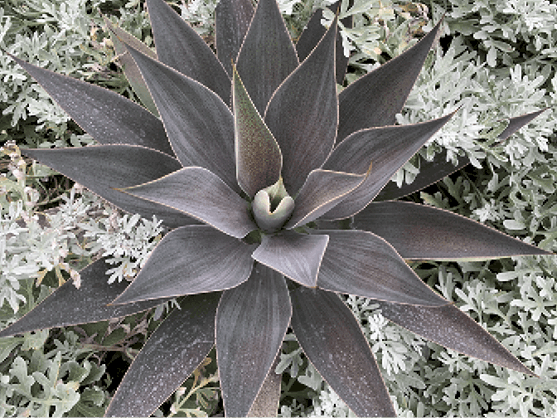
Thanks to both parents being native to alpine and desert areas, Mangave are drought tolerant in the landscape. And most Mangave can be safely overwintered in areas where temperatures drop to 20-30°F, with some doing well down to 10°F. Hans says he’s still working on cold hardiness traits.
Because of their thick leaves, as well as marginal and terminal spines, Mangave are rarely bothered by browsing animals, including deer.
Mangave are well-suited for containers. Hans suggests using them in combination with other succulents or to stand alone in a mono pot. Use a succulent or bark soil mix.
Hans has no plans to slow down the Mangave breeding program.
“I think the Mangave project is one of the most rewarding and exciting breeding programs I have worked on. It has opened many opportunities, and I have developed friendships and had a lot of fun,” he says.

Explore the May 2021 Issue
Check out more from this issue and find you next story to read.
